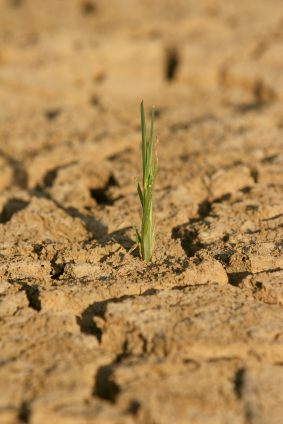A re-consecration ceremony was held this past weekend at a damaged Indian mound in Oxford, Ala. As we reported last month, the 1,500-year-old sacred and archaeologically significant site was partially demolished during a taxpayer-funded economic development project, with the excavated dirt to be used as fill for construction of a Sam’s Club, a retail warehouse store owned by Wal-Mart.
Following protests, the city appears to be backing away from the destruction, with a local landowner reporting that his property would be the source for the fill instead.
But it turns out the incident in Oxford is not the first time Arkansas-based Wal-Mart has been involved in the controversial destruction of sacred and/or archaeologically significant Native American sites.
Reader Marlin Mackley brought to our attention a similar incident in Fenton, Mo., a picturesque historic town along the Meramec River in the eastern part of the state. Inhabited for over 1,000 years, the area was home to the Fenton Mounds, two earthen burial structures dated between 600 and 1400 A.D. But in 2001, the Fenton Mounds were leveled for a Wal-Mart Supercenter.
Mackley wrote on the website he created to document what happened:
As a 15 year resident of Old Town Fenton I watched in tears as the Former Fenton Indian Burial Mounds Mesa as I call it was excavated. Over and above the crimes against human history perpetrated by these preditory developers we in my city have to look at the back of a plain block building set on top of a pile of rocks.
The St. Louis Riverfront Times newspaper reported how workers with SCI, the engineering firm hired to determine whether there were remains at the site, grew short on time so began digging less carefully — and soon struck human bone. Recalled Debra Magruder, a member of the crew who later filed a complaint with the state:
“The story I heard was that the guy working in that area thought it was a tree root and used some root clippers and snapped it in half. Then, when they figured out it was a femur, they just covered it and left it, half sticking out, and a looter came and ripped it out of the mound.” The femur was indeed protruding from within a stone box chamber. On Feb. 17, a survey crew lifted the tarp and found that someone had dug horizontally into the vault and stolen the bone.
Doing a little digging of our own, Facing South discovered that what happened in Oxford and Fenton were not isolated instances. There have been numerous cases involving destruction of Native American burial grounds and other culturally significant sites by Wal-Mart:
* An Indian burial site in Nashville, Tenn. was demolished to build a Wal-Mart Supercenter on Charlotte Pike in the late 1990s. The company behind the project was JDN Realty of Atlanta, a developer for Wal-Mart stores since purchased by Developers Diversified Realty Corp. of Ohio. By the time excavations were completed in August 1998, the remains of 154 people including children had been taken from their graves, according to the Alliance for Native American Rights.
* In the mid-’90s, Wal-Mart developer JDN was involved in the relocation of numerous native graves while building a store in Canton, Ga., Wal-Mart Watch reports. The store set up a permanent display of unearthed Indian artifacts next to its layaway counter.
* When an Indian burial ground was discovered during construction of a Wal-Mart Supercenter in the northern California community of Anderson, the company proceeded with the project anyway, opening the store in 2007. In June of this year, to make up for the site’s desecration, the store erected a bronze statue of a native Wintu feather dancer that was vandalized before the dedication ceremony.
* In 2004, Wal-Mart opened a store in Mexico within view of the 2,000-year-old pyramids of Teotihuacan despite months of protests by local residents as well as prominent Mexican artists and intellectuals. In an interview with the Associated Press, novelist and poet Homero Aridjis compared the store’s opening to “nailing globalization’s stake in the heart of old Mexico.”
* About five years ago, while building a Sam’s Club and Wal-Mart Supercenter in Hawaii, workers unearthed 64 native Hawaiian graves, reports Wal-Mart Watch [pdf]. For at least three years afterward, the bones remained locked in a trailer, awaiting reburial.
“What if they built a Wal-Mart at Arlington? How would people feel?” Hawaiian activist William Aila told the AP at the time. “Those individuals were buried there with the thought that they would be undisturbed for the rest of the eternity.”
There were other cases where Wal-Mart would have disturbed sacred sites but was dissuaded by protest:
* In 2001, Wal-Mart relocated a planned store in Morgantown, W.V. because it would have destroyed a Native American burial site, according to the Interfaith Center on Corporate Responsibility [pdf]. The decision came after company shareholders and indigenous leaders wrote letters to Wal-Mart and West Virginia state leaders protesting the chosen location.
* Five years before that, Wal-Mart scrapped a plan to build a store in the Hudson Valley community of Leeds Flat, N.Y. after Mohican remains were found, according to a website about the Stockbridge Munsee Tribe of Mohican Indians. For more on the case, read the account by Mohican historian and educator Debra Winchell.
* In the early 1990s, Wal-Mart canceled plans to bulldoze a large Indian mound in Paso Robles, Calif. after leaders of the Chumash and Salinan Indian nations protested, Wal-Mart Watch reports [pdf]. The company complained the mound was blocking motorists’ view of the store.
And it’s not only Wal-Mart who’s destroying native cultural sites. Others who’ve been involved in damaging or threatening sacred lands:
* An Indian burial site along the Cumberland River in Nashville, Tenn. was disturbed in the late 1990s by construction of a stadium for the Tennessee Titans, the National Football League team that was formerly the Houston Oilers. Though the project drew protests from local Indian rights advocates, then-Mayor, now Gov. Phil Bredesen defended it on the grounds that part of the site had already been disturbed by previous construction.
* When Whole Foods broke ground for its first store in the state of Hawaii, it discovered the remains of more than 20 indigenous people, according to the Honolulu Star-Bulletin. But the Texas-based company continued with the construction anyway, storing the bones in a trailer to rebury at the site later.
* WMAC radio reports that Georgia Gov. Sonny Perdue is using federal economic stimulus funds to build a four-lane highway near the Ocmulgee National Monument, a site of great significance to the Muscogee (Creek) people where human occupation has been recorded for 12,000 years. The road would divide the monument from surrounding traditional cultural property, leading the nonprofit National Parks Conservation Association to place the monument among America’s most endangered national parks.
Why would the U.S. allow so much of its cultural heritage to be destroyed by development? After all, there’s no shortage of federal laws designed to protect sacred and archaeologically significant sites. They include the American Indian Religious Freedom Act of 1978, the 1990 Native American Graves Protection and Repatriation Act, President Clinton’s Executive Order on Indian Sacred Sites, the National Historic Preservation Act of 1966, the Archaeological Resources Protection Act of 1979, and the National Environmental Policy Act of 1969.
But a fact sheet on sacred sites [pdf] prepared by the Morning Star Institute for the Coalition to Protect Native American Sacred Places during 2002 hearings by the U.S. Senate Committee on Indian Affairs points out there are no existing legal protections for certain sacred places — and “none that provide a specific cause of action to defend sacred places against desecration or destruction.”
Unfortunately, until those protections are strengthened, America’s ancient sacred places will continue to fall to the bulldozer.
(This story originally appeared at Facing South.)



